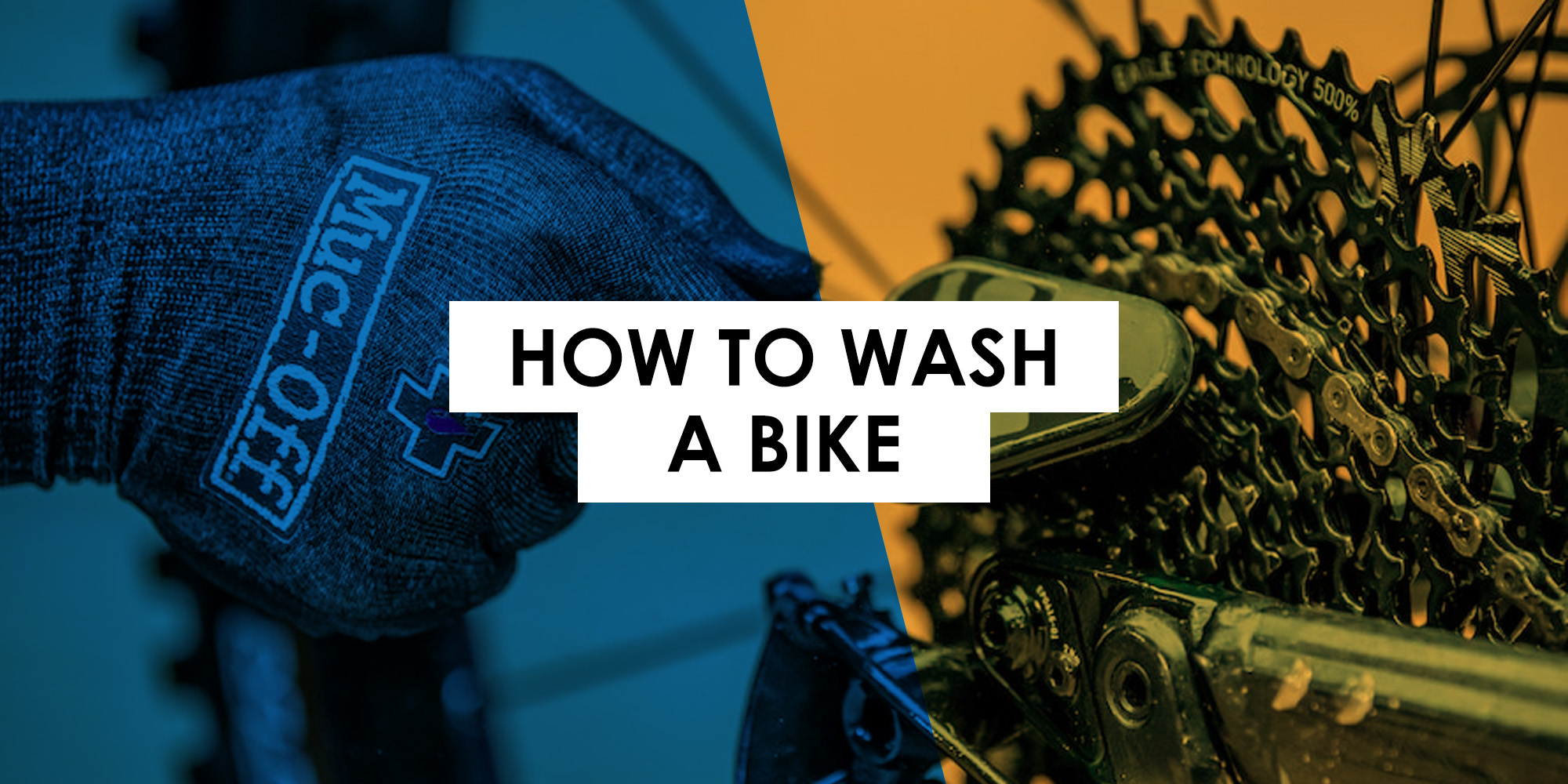How often to wash a bike
We get this question a lot in the store, “How often should I wash my bike?” While we recommend a regular schedule of maintenance (monthly, weekly, or more), there is no clear-cut answer on the frequency because it largely depends on how often you ride and what the conditions are like when you ride.
When exposed to mud, grime and debris, your bicycle parts begin to deteriorate. If you spend a lot of time riding in wet, muddy conditions, or if you ride hard, fast and often, you need to plan to clean your bike more frequently.
Rule of thumb on knowing when to wash your bike
If you touch the chain with your finger and it comes away black and greasy, your bike needs to be washed. Another sign is hearing excessive amounts of noise from the chain or other moving parts when you’re pedaling.
Supplies you’ll need for cleaning your bike
There are plenty of options when it comes to bike cleaning supplies. We carry a variety of great options at Bikes Palm Beach. One of our favorite brands for bike cleaning and maintenance products (and the brand we use in the store) is Muc Off. We also sell some equally great brands, including Simple Green, Pedro’s Bike Lust, and Finish Line. Just ask any of our experienced service staff members what they’d recommend for your individual bike’s needs.

- Bike stand (optional)
- Clean rags
- Scrub brushes
- Sponges
- Bucket
- Garden hose with nozzle
- Bike soap
- Bike degreaser
- Chain lubricant
- Bike polish
How to clean the parts of a bike
Most bike components can be cleaned by wiping them carefully with a damp or dry rag. Other components require brushing, scrubbing and relubrication.
Washing your bike with a high-pressure hose can cause damage to sensitive bearing systems throughout your bike. So, choose the gentle setting on the hose nozzle.
Cleaning your bike consists of the following 3 steps:
- Wash the drivetrain (chain, cassette, chainrings, derailleurs, cranks)
- Wash the bike frame, fork, and handlebars
- Wash the wheels
Check out this video of what a bike wash looks like at our shop
@bikespalmbeach A little behind-the-scenes of a portion of our signature tune-up process 💙 visit our website to see what the full package includes #bike #cycling ♬ Monkeys Spinning Monkeys – Kevin MacLeod & Kevin The Monkey
Wash the drivetrain
Apply degreaser to the chain by turning the cranks backwards while spraying (this is where the bike stand comes in handy). Using your drivetrain-specific brushes, dip them into the soapy bucket of water and scrub the chain (while pedaling the crank backwards), chain rings, cranks, pedals, and cassette.
If your bike is exceptionally grimy (like a mountain bike), you may need to take some extra time to scrape off the build up in the teeth of the cassette, chain rings, and derailleur pulleys where grease and dirt have collected. That type of mess can really affect the performance of your whole drivetrain. After removing all the grease, rinse thoroughly.

Wash the bike frame, fork, and handlebars
Use a bucket of soapy water and a clean soft brush or sponge to gently scrub off dirt and grime. Work from the top down, cleaning the handlebars, headset, top tube, seat post, seatstays, front fork and brakes. If you have disc brakes, use a clean, soapy sponge to gently scrub the rotors. Rinse gently.
Wash the wheels
It helps to wash the bike with the wheels removed.
Use a softer, bigger brush for tires and rims so you can get into every nook and cranny with minimal effort. Dunk your brush into the soapy bucket you used for your frame. Starting at the valve, scrub all the way around the wheel, hit the spokes and hub, then flip the wheel to get the opposite side. Repeat on the other wheel, then rinse.
Dry the Bike
Dry the entire bike thoroughly with a few clean, dry rags. If you can, leave it out in the sun for 5-10 minutes to dry.

Don’t forget to lubricate
Keep in mind, lubrication goes hand in hand with cleaning. Keeping your bike parts properly cleaned and lubricated is critical for performance and longevity. Lubrication protects moving parts from excessive wear caused by friction, prevents them from “freezing up,” and helps keep rust and corrosion at bay.
Be careful, though. Over-lubricating can lead to poor performance and component damage. Excess lube should always be carefully wiped away before your next ride.
Finish
For the extra special finish, apply polish to the frame.

